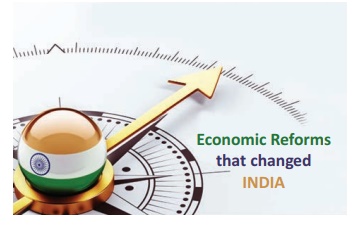Chapter: 12th Commerce : Chapter 20 : Business Environment : Liberalization, Privatization and Globalization
Meaning and forms of Liberalization
Meaning and forms of Liberalization

Liberalization refers to laws or rules being
liberalized, or relaxed, by a government. Liberalization means relaxation of
various government restrictions in the areas of social and economic policies in
order to make economies free to enter in the market and establish their venture
in the country. Liberalizing trade policy by the government includes removal of
tariff, subsidies and other restrictions on the flow of goods and services
between countries. Liberalization is the result of New Industrial Policy which
abolished the "License system" or “Licence Raj”.
Forms of Liberalization
The government of India has adopted several
measures of liberalization. Some of these measures are as under:
(a) Liberalization
for industrial licensing: In India, it was mandatory to obtain license before
liberalization for setting up certain industries. After liberalisation, all
industries except six specific industries were liberalized i.e., free from
obtaining license.
Those Six non-liberalised industries
were drugs and pharmaceuticals, hazardous chemicals, explosives, tobacco
products, alcoholic drinks, and electronic, aerospace and defence equipment.
Currently, only five industries are under compulsory licensing. Drugs and
Pharmaceuticals industry has been liberalised.
(b) Freedom
for expansion and production to industries: Earlier government used to fix the maximum limit of
production capacity. Now the industries are free to decide their production
limits by their own on the basis of the requirement of the markets.
(c) Increase
in the investment limit of the small industries: Investment
limit of the small scale industries
has been raised to Rs. 1 cr. So these companies can upgrade their machinery and
improve their efficiency.
(d) Foreign
Exchange reforms: The first important
reform in the external sector was made in the foreign exchange market. In 1991,
as an immediate measure to resolve the balance of payments crisis, the rupee
was devalued against foreign currencies. This led to an increase in the inflow
of foreign exchange.
(e) Liberalization
of export and import transactions: By simplifying procedures for imports and exports the government
wanted to permit the international flow of goods, services, capital, human
resources and technology, without many restrictions.
Related Topics